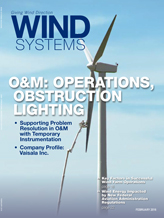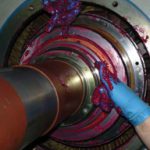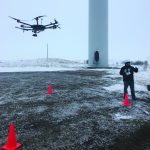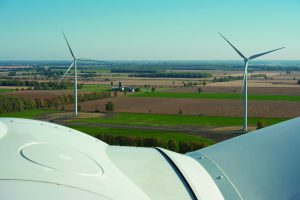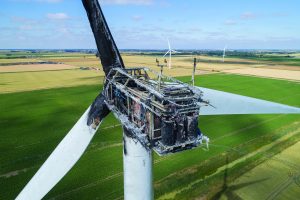Following the Federal Aviation Administration’s (FAA) testing and introduction of new performance guidelines, Laufer Wind is now making its patented Aircraft Detection System (ADS) available in the United States. The ADS is a radar-activated obstruction lighting system designed to turn blinking lights atop wind turbines and tall towers on or off based on the presence or absence of aircraft in the vicinity. This technology allows “lights out” for up to 98 percent of the night, which significantly reduces the towers’ visual impacts on surrounding communities.
Last month, the FAA published an updated Advisory Circular 70/7460-1L that set forth standards for marking and lighting obstructions that affect the National Airspace System. The FAA added a new Chapter 14, introducing performance guidelines for radar-activated lighting technologies known as Aircraft Detection Lighting Systems (ADLS).
In a June 2014 demonstration at the National Renewable Energy Laboratory in Boulder, Colorado, FAA researchers conducted flight tests against a Laufer Wind ADS installation configured to control lights on multiple wind turbines and a meteorological tower. An FAA technical note published in October 2015 confirmed that Laufer Wind’s ADS meets FAA requirements for aircraft detection lighting systems.
Several wind farms in the U.S. have been permitted with requirements by local governments to include ADLS technology. Laufer Wind said it expects to provide systems for wind farm and communication towers both operational and those still in development.
According to the FAA technical note, “due to the number of existing telecommunications towers and wind turbines, combined with expected future construction, the number of obstructions that have these required lighting fixtures has greatly increased. As a result, it has created a light pollution nuisance to residents living near these obstructions. Using an ADLS could have a positive impact on this problem, while still providing a sufficient level of safety for pilots operating at night in the vicinity of these obstructions.”
The report also notes that “the ability to turn off lights when they are not needed could have a positive impact on reducing the number of avian fatalities.”
“Radar-activated lighting is an effective tool for wind farm developers and tower owners to assist with permitting and to reduce the impact in local communities and on wildlife,” said Eric Laufer, president of Laufer Wind. “We are especially excited to be the only vendor to have received a technical note from the FAA confirming our system’s ability to meet the new ADLS requirements.”
Laufer, an aeronautical engineer and pilot, began working on the technology several years ago when a wind farm project faced community opposition over lighting impacts.
“This has been an eight-year project of development and testing, and it serves as a model of how the public and private sectors can work cooperatively to the benefit of communities across the country,” Laufer said.
— Source: Laufer Wind
For more information,
go to www.lauferwind.com.
















